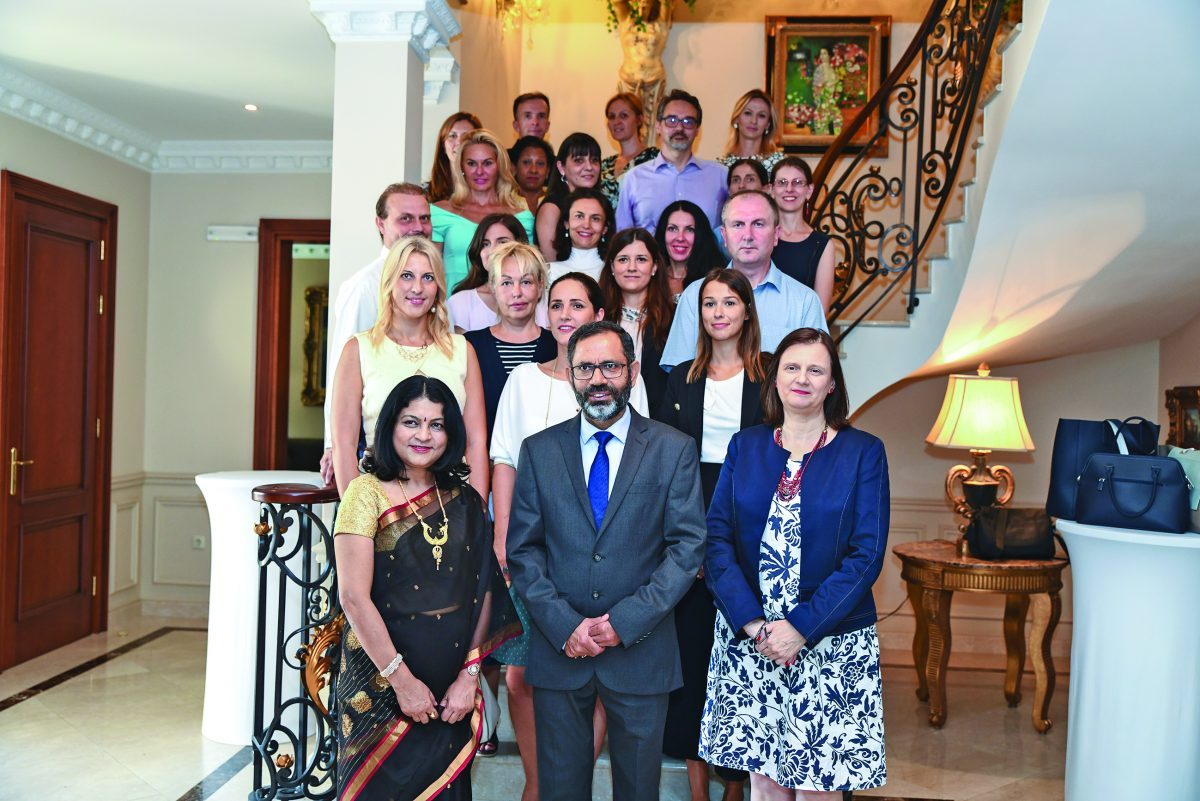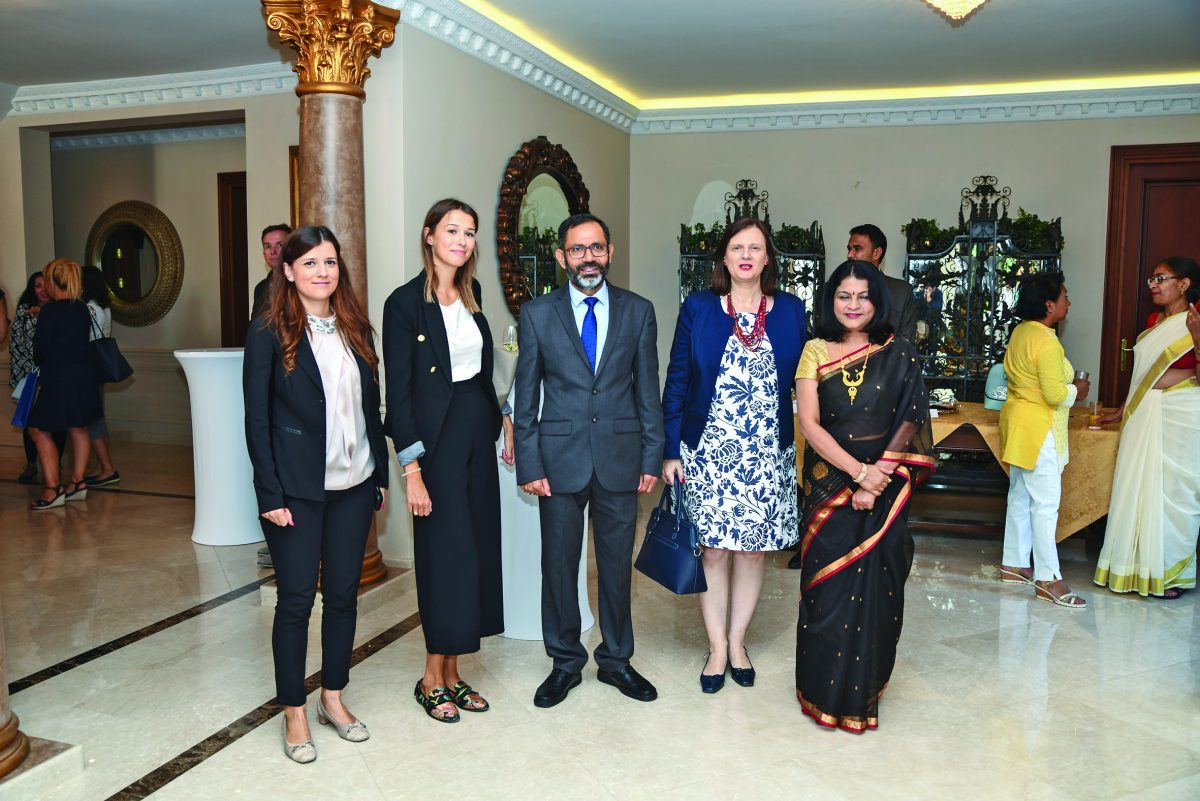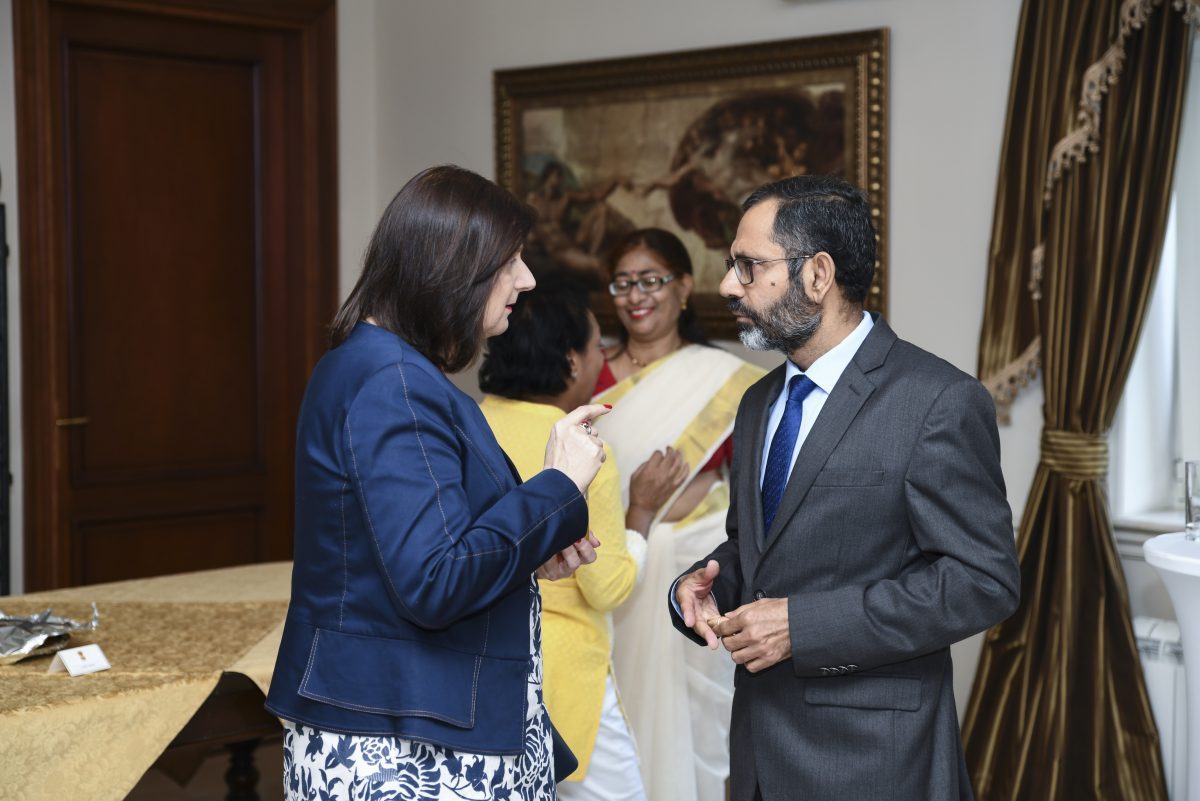Despite its own resource constraints, India has been sharing its developmental experiences and technical expertise with other countries in the spirit of “Vasudhaiva Kutumbakam”.

The Government of India’s approach to Development Partnership has been shaped by India’s struggle for independence and solidarity with other colonized and developing countries and the inspiring leadership of Mahatma Gandhi who said “I do want to think in terms of the whole world. My patriotism includes the good of mankind in general. Therefore, my service to India includes the service of humanity”.
India’s approach to development is mainly human-centric and is marked by Respect, Diversity, Care for the future, and Sustainable development. For India, the most fundamental principle in cooperation is respecting development partners and be guided by their development priorities. India’s development cooperation does not come with any conditions, as stated by the Hon’ble Prime Minister of India in his address at the Parliament of Uganda in July 2018, “Our development partnership will be guided by your priorities. It will be on terms that will be comfortable for you, that will liberate your potential and not constrain your future… We will build as much local capacity and create as many local opportunities as possible”.
Indian model of developmental cooperation is comprehensive and involves multiple instruments including grant-in-aid, line of credit and capacity building and technical assistance. Depending on the priorities of partner countries, India’s development cooperation ranges from commerce to culture, energy to engineering, health to housing, IT to infrastructure, sports to science, disaster relief and humanitarian assistance to restoration and preservation of cultural and heritage assets.
Lines of Credit
Development assistance in the form of concessional Lines of Credit (LOCs) is extended by the Government of India under the Indian Development and Economic Assistance Scheme (IDEAS) through the Exim Bank of India. More than 300 LOCs worth US$ 30.66 billion have been extended to 64 countries. The projects under the LOCs cover critical infrastructure sectors such as transport connectivity through railways, roads and ports; power generation and distribution; agriculture and irrigation; manufacturing industries, healthcare, education and capacity building. So far about 300 LoC projects have been completed while more than 260 projects are under implementation.
Out of the total LOCs of US$ 30.66 billion, US$ 15.90 billion have been extended to Asian countries, with the largest value of commitments having been made in India’s immediate neighbourhood. LOCs worth US$ 7.862 billion have been extended to Bangladesh, US$ 2.02 billion to Sri Lanka, US$ 1.65 billion to Nepal, US$ 964.80 to Mauritius, US$ 840 million to Maldives, US$ 538.90 million to Myanmar and US$ 128 million to Seychelles.
There is a special focus on regional connectivity initiatives in the neighbourhood under Government of India (GoI) LOCs as these can act as force multipliers to accelerate regional growth & development, promote people-to-people contact and encourage trade and commerce. A total of 97 connectivity projects for USD 6.93 billion have been taken up under LOCs in 4 countries in our neighbourhood, out of which 44 projects have already been completed. These include: (i) Bangladesh: 31 projects (13 already completed); (ii) Nepal: 43 Road projects (17 already completed). (iii) Sri Lanka: 19 projects (11 already completed); (iv) Myanmar: 4 projects (3 already completed).
India has completed numerous iconic infrastructure projects in partner countries under the Lines of Credit. Some of these iconic projects include the Parliament Building of Gambia, the Presidential Palace in Ghana, the Kosti Power project in Sudan which provides 1/3rd of the country’s power, the Nyaborongo Power Project in Rwanda which provides 1/4th of the country’s power, Railway Bridges and Signalling Systems in Bangladesh, the post-war rebuilding of the Sri Lankan Railways etc. India is building the first Oil Refinery of Mongolia under LOC at a cost of USD 1.24 billion which will provide critical energy security to this landlocked country. India has set up the first ever industrial units in many countries like the first Cement Plant of Djibouti, the first Milk Processing Plant of Mauritania, the first Sugar Factory of Ghana etc. The Upper Ruvu Water Treatment Plant in Tanzania provides clean drinking water to more than 2 million people in the Dar es Salaam area. LoCs have also been extended in many new sectors like defence and solar energy.
Grant-in-Aid projects
A number of grant-in-aid projects, aggregating around US$ 4 Billion, covering various sectors such as infrastructure, hydroelectricity, power transmission, agriculture, education, health, Industry etc, as prioritized by the host governments, are under implementation in Afghanistan, Bangladesh, Bhutan, Myanmar, Maldives, Nepal Sri Lanka, Mauritius, Seychelles and other countries. Beyond India’s neighbourhood in South East Asia, Central Asia, Africa and Latin America, bilateral projects in Information and Computer Technology (lCT), Small & Medium enterprises and archaeological conservation have been undertaken.
A number of grant-in-aid projects, aggregating around US$ 4 Billion, covering various sectors such as infrastructure, hydroelectricity, power transmission, agriculture, education, health, Industry etc
Iconic projects completed with Government of India grant assistance include construction of Afghan-India Friendship Dam in Afghanistan, Construction of Afghan Parliament Building in Kabul, construction of new ENT hospital project in Mauritius, Metro Express Project in Mauritius, Jaffna Cultural Centre in Sri Lanka, Supreme Court building in Mauritius etc.

Capacity Building and Technical Assistance
Capacity building assistance is an important strand of India’s development partnership programme. The Government of India provides capacity building support to other friendly countries in various forms such as civilian and military training programmes in India, training on-site abroad, deputation of Indian experts, establishment of centres of excellence in IT and vocational training centres.
Indian Technical and Economic Cooperation (ITEC) programme, instituted in 1964, now covers around 160 partner countries from Asia, Africa, East Europe, Latin America, the Caribbean as well as Pacific and Small Island countries. The ITEC Programme comprises mostly of short term training courses organised annually across Indian public institutions in various streams for govt. officials and working professionals. The Programme has grown organically from about 4000 training slots in 2006-07 to around 14000 slots (including defence training) in 2019-20. During 2019-20, civilian training slots were offered under ITEC in over 383 courses across 98 institutions in a wide and diverse range areas. These include disciplines such as Engineering and Technology; Government Functions; Environment and Climate Change; Agriculture; Banking, Finance, Accounts and Audit; English Language; Health and Yoga; Petroleum; ICT; Journalism; Management and Leadership; Power, renewable & Alternate Energy, including solar; Rural Development; Women Empowerment etc.
Serbia is one of the ITEC partner countries and since 2008, 165 Serbian mid-level career professionals have undergone courses
Serbia is one of the ITEC partner countries and since 2008, 165 Serbian mid-level career professionals have undergone courses on a wide and diverse range of skills and disciplines, including in ICT, Expenditure Management, Entrepreneurship, WTO, Banking & Finance, Renewable Energy, Climate Change, Legislative Drafting, Yoga, English proficiency, etc. As such, India has been contributing to capacity building in both public services and private sector in Serbia. Embassy of India in Belgrade celebrate every year the Indian Technical & Economic Cooperation (ITEC) Day where ITEC alumni participate and share their learning experience in India. Last ITEC Day was celebrated on 11 September 2019.

India for Humanity
In October 2018, the ‘India for Humanity’ initiative was launched to commemorate the 150th birth anniversary of Mahatma Gandhi and honour his service to humanity. In collaboration with the NGO Bhagwan Mahaveer Viklang Sahayata Samiti (BMVSS), popularly known as “Jaipur Foot,” the programme features year-long series of artificial limb fitment camps in a number of countries. A number of artificial limb fitment camps have already been organized in several countries in Asia and Africa.
In the current Corona crisis, India has extended COVID-related medical assistance including testing kits, protective gear and Hydorxychloroquine and other medicines to around 90 plus countries across the globe and its role as a reliable supplier of pharmaceauticals and medicines is globally recognised and appreciated. Apart from supply of medical relief, India also extended technical assistance by way of despatching rapid response teams to Kuwait and Maldives.
Several e-ITEC webinars on handling the Corona pandemic have also been hosted for sharing experience and best practices with experts from other countries.
Cooperation in Cultural and Heritage projects
With Government of India’s assistance programme more than 50 cultural and heritage projects have been completed, including restoration of Ananda Temple; Shwedagon Pagoda (Myanmar), restoration of Thiruketheeswaram temple; installation of Replica of Sarnath Buddha; Indian Gallery at Sacred Tooth Relic Temple, Kandy (Srilanka), reconstruction of various Dzongs; Tango Buddhist College (Bhutan), renovation of Bala Tiripura Sundari Temple; construction of Dharamshalas-Pashupathinath temple (Nepal), conserving Girish Chandra Sen’s Residence as Museum; Manipuri Cultural complex at Maulvibazar (Bangladesh), restoration of Mosques (Maldives), restoration of stor Palance; Blue Mosque (Afghanistan), setting up of National Archives and Library (Mauritius), built National War Memorial (Tribute to Indian Soldiers in World War I) (France), borobudur and Prambanan temples (Indonesia), gifting statue of Lord Buddha to Gandan Monastery (Mongolia), conservation of My Son Group of Temples (Vietnam), conservation of Vat Phou Shiva temple (Laos), conservation of Ta Prohm, Angkor Wat, Preah Vihar temples (Cambodia), Torana gate (Malaysia). Currently around 25 cultural and heritage projects are under implementation in various countries.